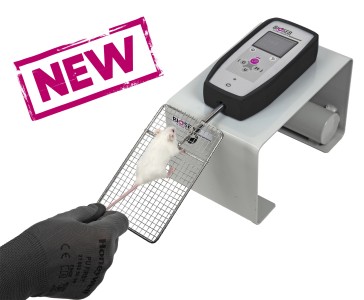Authors
P Colella, P Sellier, MJ Gomez et al
Lab
INTEGRARE, Genethon, Inserm, Univ Evry, UniversitŽ Paris-Saclay, Evry, France.
Journal
EBioMedicine
Abstract
Background Pompe disease (PD) is a neuromuscular disorder caused by deficiency of acidalpha-glucosidase (GAA), leading to motor and respiratory dysfunctions. Available Gaa knock-out (KO) mouse models do not accurately mimic PD, particularly its highly impaired respiratory phenotype.
Methods Here we developed a new mouse model of PD crossing Gaa KOB6;129 with DBA2/J mice. We subsequently treated Gaa KODBA2/J mice with adeno-associated virus (AAV) vectors expressing a secretable form of GAA (secGAA).
Findings Male Gaa KODBA2/J mice present most of the key features of the human disease, including early lethality, severe respiratory impairment, cardiac hypertrophy and muscle weakness. Transcriptome analyses of Gaa KODBA2/J, compared to the parental Gaa KOB6;129 mice, revealed a profoundly impaired gene signature in the spinal cord and a similarly deregulated gene expression in skeletal muscle. Muscle and spinal cord transcriptome changes, biochemical defects, respiratory and muscle function in the Gaa KODBA2/J model were significantly improved upon gene therapy with AAV vectors expressing secGAA.
Interpretation These data show that the genetic background impacts on the severity of respiratory function and neuroglial spinal cord defects in the Gaa KO mouse model of PD. Our findings have implications for PD prognosis and treatment, show novel molecular pathophysiology mechanisms of the disease and provide a unique model to study PD respiratory defects, which majorly affect patients.
BIOSEB Instruments Used
Grip strength test (BIO-GS3)
Source :

 Douleur - Allodynie/Hyperalgésie Thermique
Douleur - Allodynie/Hyperalgésie Thermique Douleur - Spontanée - Déficit de Posture
Douleur - Spontanée - Déficit de Posture Douleur - Allodynie/Hyperalgésie Mécanique
Douleur - Allodynie/Hyperalgésie Mécanique Apprentissage/Mémoire - Attention - Addiction
Apprentissage/Mémoire - Attention - Addiction Physiologie & Recherche Respiratoire
Physiologie & Recherche Respiratoire




































 Douleur
Douleur Système Nerveux Central (SNC)
Système Nerveux Central (SNC)  Neurodégénérescence
Neurodégénérescence Système sensoriel
Système sensoriel Système moteur
Système moteur Troubles de l'humeur
Troubles de l'humeur Autres pathologies
Autres pathologies Système musculaire
Système musculaire Articulations
Articulations Métabolisme
Métabolisme Thématiques transversales
Thématiques transversales Congrès & Meetings
Congrès & Meetings 